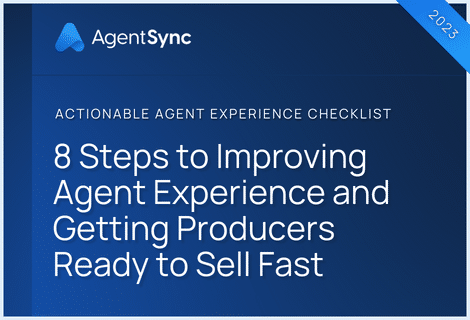

The insurance industry, like many others, has committed to a more diverse, equitable, and inclusive approach to hiring and recruitment, but, with DEI policies going dark across America, will the current political moment dial back gains for the industry?
Most businesses understand the benefits of diversity, yet the insurance industry as a whole has struggled to attract talent across racial, ethnic, and gender lines. Federal Supreme Court rulings regarding the application of nondiscrimination law ended affirmative action policies the way they have been practiced in colleges across America for decades. That has encouraged a spate of other lawsuits that could also impact the way private businesses enact DEI policies in the workplace.
Still, there are some bright spots of progress, as well as evidence that increasing diversity could help with the industry’s impending talent shortage. Not least of all, diversity in the insurance workforce could help shrink the coverage gap (particularly in health and life insurance) that today leaves non-white people at greater risk of financial losses.
Diverse representation in insurance: A look at the market
According to the 2020 Census, Black people make up 13.4 percent of the U.S. population, while the country is also composed of over 50 percent women and girls. The most recent data from the Bureau of Labor Statistics (BLS) show that the insurance industry employs a higher percentage of women than the U.S. labor market overall, and Black and Hispanic employees are employed at rates above their share of the population in certain roles. Yet, the idea of diversity isn’t strictly about skin color, sexual orientation, gender identity, or any other single attribute, but rather the collection and intersection of these identities. This means it’s entirely possible for the industry to excel at fostering inclusivity for some identities while falling short in others.
It’s also worth noting that simply employing people of different genders, races, sexual orientations, etc. isn’t a “get out of jail free” card for the insurance industry on diversity. It’s common that companies may have a proportionate number of women or people of color working at the entry level (as noted in this McKinsey podcast), while senior leadership and boards of directors are still composed nearly exclusively of white men. For example, the aforementioned BLS data shows Black and Hispanic employees are essential to the business of policy operations and claims payments, but the higher-paid positions of business operations and executive leadership are conspicuously absent of people of color.
Even insurance mascots hearken to the industry’s diversity issues, with just two notable Black men (Jake from State Farm and Dennis Haysbert, longtime face and voice of Allstate), one woman (Flo), a countless number of white men, and a handful of zoo animals. All jokes aside, the industry is suffering from a reputation problem that its existing diversity problem doesn’t help.

Why does the insurance industry struggle with diversity?
Despite good intentions and efforts to recruit and hire diverse candidates, developing and promoting minority and underrepresented workers into leadership roles isn’t easy.
A variety of factors contribute to the insurance industry’s lack of diverse talent. Like many things in the industry, we could chalk it up to “the way it’s always been,” but that isn’t a good reason for a homogenous workforce any more than it’s a good reason to keep using outdated technology.
While the industry has some wins in this regard, there are a few long-term stumbling blocks to attracting diverse talent.
Historical unfair discrimination by insurance toward Black consumers
The insurance industry has a history of what the National Association of Insurance Commissioners and The Center for Insurance Policy and Research call “unfair discrimination” toward Black people. By nature, insurance companies must discriminate when making underwriting and rating decisions. However, they shouldn’t use factors such as race, gender identity, or national origin to determine the “price of or access to” insurance products. Unfortunately, this is exactly what’s happened in the past, and the historical unfair discrimination against Black insurance consumers has far-reaching impacts on today’s industry.
Today, people of color (including, but not limited to, Black and Hispanic people) are less likely to have health insurance than white people in America. While Black Americans are actually a bit more likely to have life insurance than the general population, the legacy of racism in life insurance coverage means most Black policyholders have inadequate coverage: just enough to cover funeral expenses in most cases.
In auto insurance, as another example, research shows consumers with similar risk profiles are charged significantly more based on living in predominantly minority ZIP codes. With racism and discriminatory practices built into the history of insurance products, it’s no wonder the industry hasn’t always earned the trust of Black people and other minorities.
As the insurance industry as a whole makes changes to prioritize diversity, equity, and inclusion in its recruiting, hiring, and retention practices, the hope is Black, Hispanic, and other diverse consumers will achieve better outcomes.

How the insurance industry is focusing on diversity, equity, and inclusion (DE&I)
The industry’s top insurance carriers and many of the largest insurance agencies and brokerages are emphasizing creating successful diversity initiatives. While it’s difficult to find any actual blueprints for success, aside from each and every company stating that it values diversity, the answer is certainly not just words. There’s a lot of action happening too.
Just a few examples of how the insurance industry is making efforts to improve diversity, equity, and inclusion include these associations and events:
- Business Insurance Diversity & Inclusion Institute Leadership Conference
- Women in Insurance Leadership
- Latin American Association of Insurance Agencies
- National African American Insurance Association
- National Association for Advancement of Women in Insurance
- LINK-USA LGBTQ+ Insurance Network
Using modern technology to bridge the diversity gap
As the insurance industry tries to attract a new generation of talent, it must do so with an eye toward diversity. This means bringing people into the insurance industry who wouldn’t have previously considered a career, or even been aware of the opportunities. Believe it or not, adopting technology that provides employees with a best-in-class experience is part of the formula for attracting new talent and, by definition, diverse talent.
If your insurance organization is ready to do what it takes to broaden your talent pool, consider checking out a modern distribution channel management solution like AgentSync.

